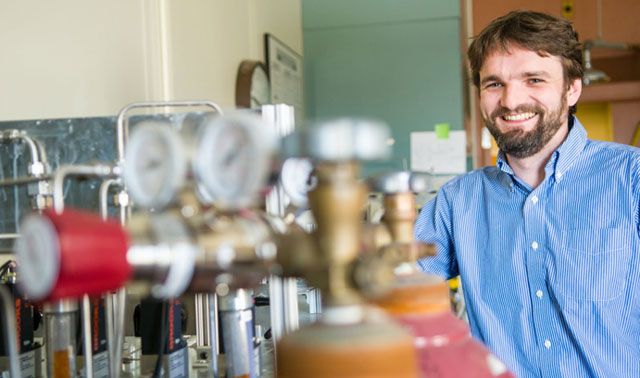You may not be familiar with quantum dots, but chances are there's a product or technology in your world that absolutely relies upon them.
Quantum dots (QD) are crystals of semiconductor material with nanometer-scale diameters -- and highly-tuneable properties that make them important to products that enable modern life. Currently used in diverse applications such as medical imaging, lighting, display technologies, solar cells, photocatalysts, and renewable energy and optoelectronics, QDs are complicated to manufacture. In particular, current chemical synthesis methods use high temperatures and toxic solvents, which make environmental control and remediation expensive, challenging – and costly.
Lehigh University associate professors Bryan Berger and Steven McIntosh of chemical and biomolecular engineering, along with Professor Christopher Kiely of materials science and engineering, have demonstrated a bacterial method for the synthesis of extracellular, water-soluble quantum dot nanocrystals at room temperature.
The effort is the first example of engineers harnessing nature's unique ability to achieve cost effective and scalable manufacturing of QDs using a bacterial process. It is a scalable bioprocess that could reduce cost and environmental impact of existing industrial usage of QD technology, and effectively lower barriers to entry for other manufacturing sectors.
"Biosynthetic QDs will enable the development of an environmentally-friendly, bio-inspired process unlike current approaches that rely on high temperatures, pressures, toxic solvents and expensive precursors," Berger says. "We have developed a unique, 'green' approach that substantially reduces both cost and environmental impact."
The cross-disciplinary Lehigh team developed its biosynthesis approach using an engineered strain of the bacterium Stenotrophomonas maltophilia capable of controlling QD size and conferring water solubility. This green biomanufacturing process has the potential to reduce manufacturing costs by at least 10- to 100-fold, which opens the door to a significant expansion of large-scale commercial usage of QDs.
The Lehigh research group is also investigating the expansion of its work to include other functional materials to facilitate interaction with light, electrical or magnetic fields, or chemicals for a wide range of applications from energy to medicine.
Says McIntosh: "While biosynthesis of structural materials is relatively well established, harnessing nature to create functional inorganic materials will provide a pathway to an environmentally-friendly biomanufacturing model. We believe that this work is the first step on this path."
-- Gabby Romano '16 is a student writer with the P.C. Rossin College of Engineering and Applied Science.

